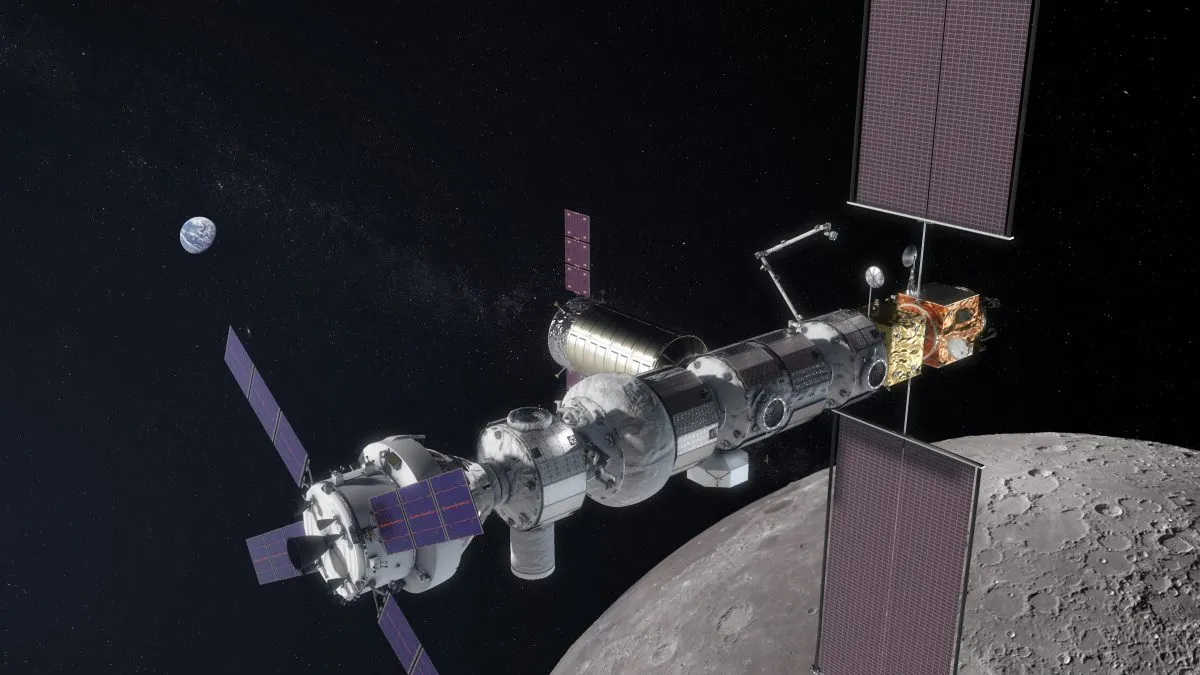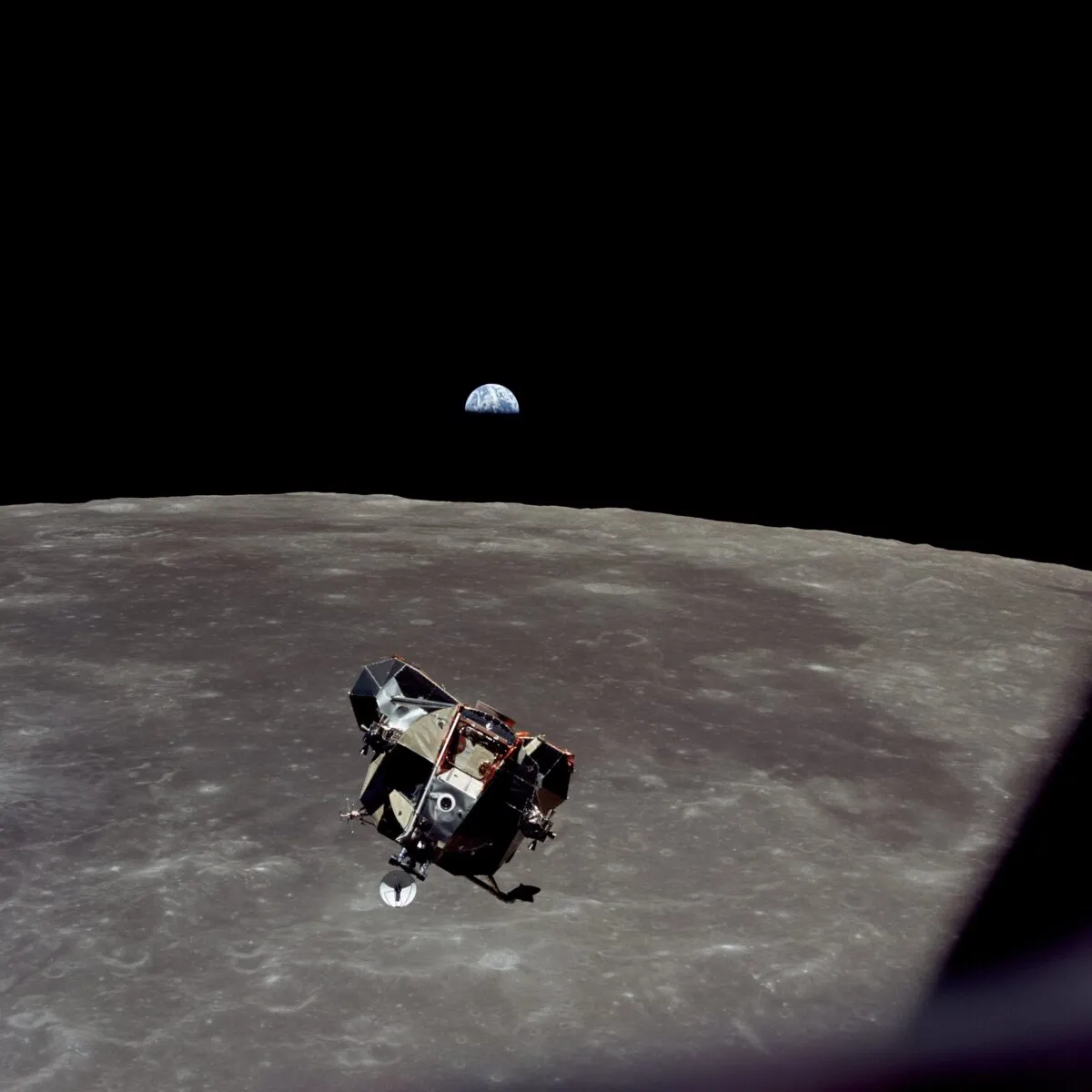There are plans for a lot of crewed missions to the Moon in the coming years.
Artemis, led by NASA but with involvement of ESA, JAXA and the Canadian Space Agency as well as commercial spaceflight partners, aims to return the first humans to the Moon since the Apollo programme.
If all goes well, this will be followed by the establishment of permanent human settlements on the lunar surface.
All of this would involve landing not just the crews themselves, but all the habitats and infrastructure needed to support them on the surface, and so requiring a lot more – and crucially, much heavier – landers than used by Apollo.

One important consideration for such massive landers, say Philip Metzger at the Florida Space Institute and James Mantovani at NASA Kennedy Space Center, is how much surface material their rockets will kick up into space.
Because the Moon is airless and has much lower gravity than Earth, these sprays of ejecta particles can be blasted at high speeds right up to orbital altitudes.
Metzger and Mantovani modelled a lander of 40 tonnes (over 2.5 times heavier than the Apollo lunar modules) touching down onto the Moon and calculated the quantity, size and trajectory of lunar material that would be blasted up into space.
A key part of the planned human exploration of the Moon will be the Lunar Gateway, a space station in lunar orbit that will serve as a staging point for missions down to the surface.

Metzger and Mantovani calculated that every square metre of the Gateway would experience around 10,000 impacts of dust-grain-sized particles as it orbited.
But even considering as many as 100 landings onto the Moon, and assuming that Gateway passes through each lingering ejecta sheet 10 times, less than 0.1% of Gateway’s structure will be abraded to a few microns deep
The authors note that this damage should nonetheless be taken into account when designing the Gateway and its operation.
The Lunar Gateway will orbit between 1,500km and 70,000km from the surface, but for a spacecraft in low lunar orbit the situation is much worse.
Metzger and Mantovani considered a spacecraft orbiting at an altitude of 110km above the lunar surface, matching the parking orbit of the Apollo command modules.

At this lower altitude, the spacecraft has a much higher orbital velocity of around 5,800km/h and as the ejecta hasn’t climbed as far against the Moon’s gravity, it will be travelling at a much faster 16,000km/h.
On top of that, the plume won’t have dispersed as much, so the density of impacts will be greater too.
Such a low orbiting spacecraft could sustain extensive damage, the researchers calculating that around 4% of any exposed glass would be pitted and eroded.
This could impair visibility through windows and reduce the power-generating ability of solar panels.
The news isn’t all bad, though. As well as outlining the hazards, the researchers describe possible solutions.
The first surface missions could construct robust landing pads that would greatly reduce the amount of material ejected up into orbit.
Or landings could be carefully choreographed to ensure orbiting spacecraft miss the worst of the ejecta sheets.
Lewis Dartnell was reading The Damage to Lunar Orbiting Spacecraft Caused by the Ejecta of Lunar Landers by Philip T Metzger and James Mantovani.
Read it online at arxiv.org/abs/2305.12234.
This article originally appeared in the August 2023 issue of BBC Sky at Night Magazine.

